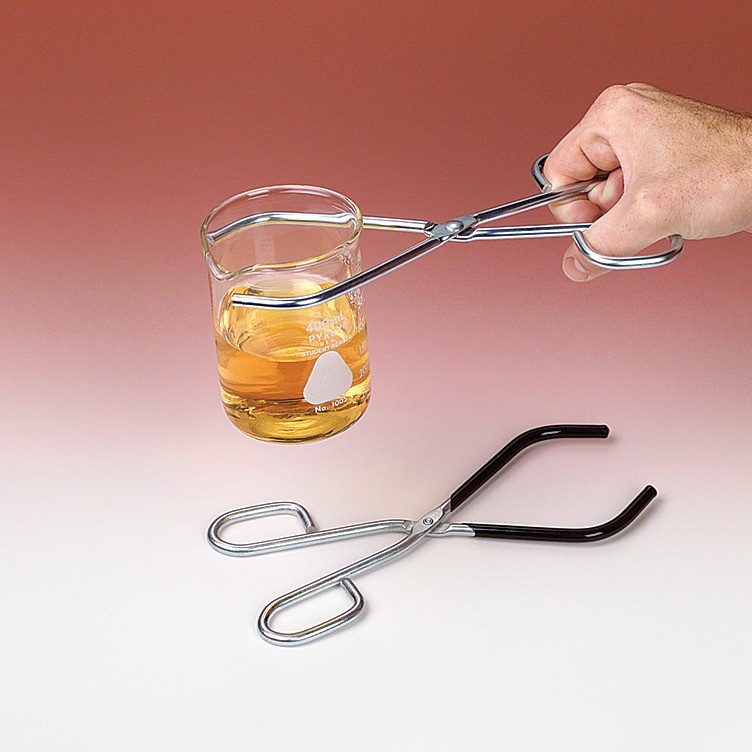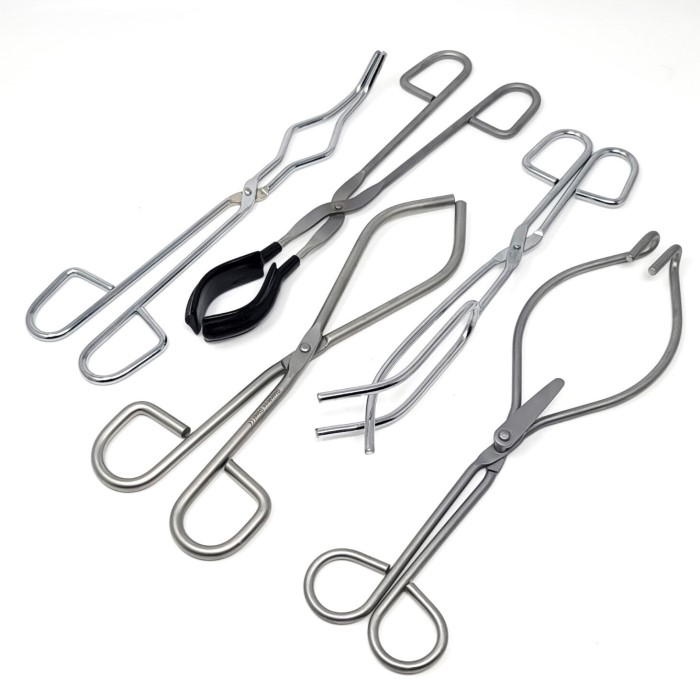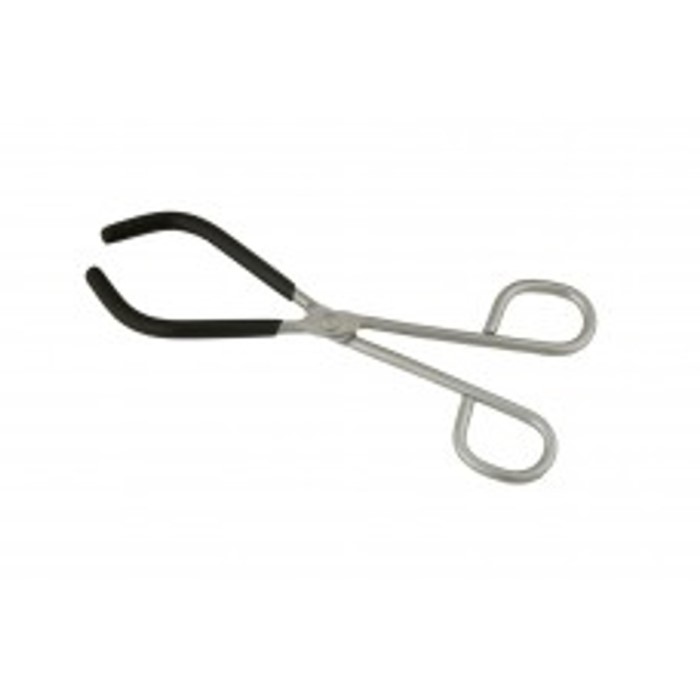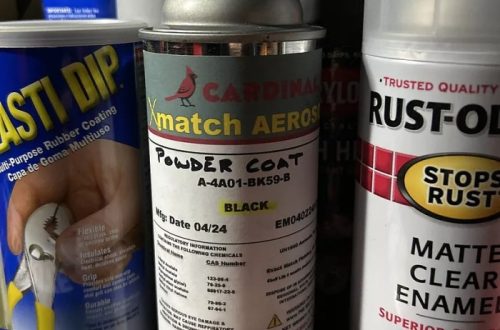What Are Beaker Tongs?
Beaker tongs are specialized tools used in laboratories. They help to handle hot or hazardous beakers safely. These tools are essential when working with high-temperature liquids or chemicals. Beaker tongs usually have rubber-coated grips or non-slip surfaces. This provides better safety and control during use.
Most beaker tongs have a scissor-like design. This design allows them to grip various sizes of beakers securely. The tips of the tongs are often shaped to hold beakers firmly without slipping. Some models are adjustable to handle different beaker sizes more effectively.
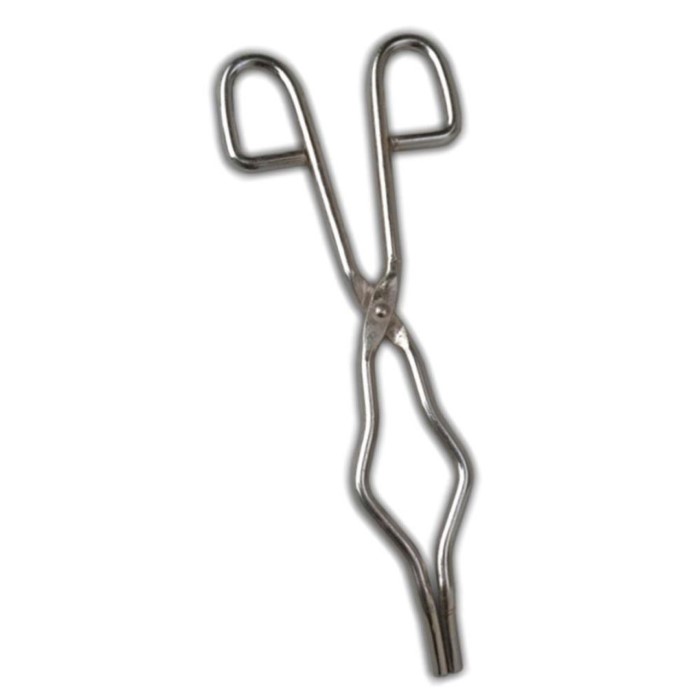
Beaker tongs serve a crucial role in preventing accidents in labs. By using these tools, users minimize direct contact with dangerous substances. They are commonly used in schools, research labs, and industrial settings. Beaker tongs ensure safety and efficiency during experiments or chemical handling.
Different Types
Beaker tongs come in several designs to suit various laboratory needs. Each type is crafted for specific purposes, ensuring both efficiency and safety.
Flat-Jaw
Flat-jaw beaker tongs are versatile and commonly used. Their flat gripping surfaces provide secure handling for smooth and cylindrical beakers.
Curved-Jaw
Curved-jaw tongs are suitable for odd-shaped or uniquely-sized beakers. The curved jaws offer additional grip for stability.
Rubber-Coated
Rubber-coated beaker tongs provide extra grip and thermal resistance. They are ideal for handling hot or slippery beakers.
Adjustable
Adjustable tongs allow users to modify the grip size. These are great for handling various beaker dimensions conveniently.
Specialty
Specialty tongs are designed for specific tasks, like moving crystallization dishes or flasks. These are essential for labs with diverse equipment.

Understanding the different types of beaker tongs helps you choose the right one for your task. Correct usage ensures safety and enhances laboratory efficiency.
Primary Uses
Beaker tongs are essential for various laboratory tasks that involve handling beakers safely.
Handling Hot Beakers
- Safety First: Beaker tongs are essential tools designed to safely handle beakers containing heated substances, significantly reducing the risk of burns.
- Accident Prevention: By using tongs to grip the beaker, users can avoid coming into direct contact with hot surfaces, thereby minimizing the likelihood of accidents or injuries during laboratory procedures.
Transporting Hazardous Chemicals
- Minimized Exposure: Beaker tongs are particularly beneficial when handling beakers filled with hazardous chemicals, as they help minimize direct exposure to potentially harmful substances.
- Enhanced Safety: This feature is critical for maintaining a safe working environment, as it helps protect users from chemical splashes, spills, or contact with toxic materials.
Moving Fragile Equipment
- Protection of Glassware: Beaker tongs provide a secure and stable grip while moving delicate glassware, which is essential in avoiding breaks or cracks.
- Increased Confidence: Using tongs allows laboratory personnel to feel more confident in transferring fragile equipment, knowing that the risk of damage is significantly reduced.
Support During Experiments
- Assisting Lab Processes: Beaker tongs play a crucial role during various laboratory processes, including heating, mixing, and cooling, and they enhance safety and efficiency.
- Facilitating Workflow: By providing an easy and safe way to manipulate hot or hazardous beakers, tongs help ensure a smoother and more efficient workflow during experiments.
Transferring Beakers Between Equipment
- Ease of Transfer: Beaker tongs make it simple to transfer beakers between different laboratory equipment, such as Bunsen burners, hot plates, or water baths.
- Versatility in Applications: This versatility is essential for conducting experiments that require precise temperature control or involve multiple apparatuses, as it enables seamless movement without compromising safety.
Using beaker tongs for these tasks ensures safety, reduces contamination risks, and enhances laboratory workflow efficiency.
Materials Used
Beaker tongs are made from materials designed to withstand harsh laboratory conditions. These materials ensure durability, heat resistance, and safe handling of beakers.
- Stainless Steel:
- Stainless steel is the most common material for beaker tongs.
- It provides strength and resists corrosion from chemicals and heat.
- This material ensures long-term durability and ease of cleaning.
- Rubber Coating:
- Some beaker tongs have rubber-coated tips or grips.
- Rubber improves grip and prevents slipping during use.
- It also offers better thermal resistance for handling hot beakers.
- Aluminum:
- Lightweight aluminum tongs are ideal for light-duty tasks.
- They are easier to handle but less robust than stainless steel.
- Plastic or Polymer:
- Heat-resistant polymers are used for specific non-heated applications.
- These tongs are suitable for handling sensitive or chemically reactive items.
- Nickel or Chrome Coating:
- Some tongs have nickel or chrome plating for extra durability.
- The coating protects the tongs from wear and chemical damage.
Using high-quality materials in beaker tongs ensures safety and efficiency in laboratory processes. Choose the material based on your specific needs to enhance performance.
Benefits of Using in Laboratories
Beaker tongs are indispensable tools that offer multiple benefits in laboratory environments. These advantages make them essential for safe and efficient lab work.
Improved Safety
Beaker tongs reduce direct contact with hot or hazardous materials. This minimizes the risk of burns, spills, or chemical exposure. By using tongs, lab workers handle dangerous substances with greater control and safety.
Versatile Handling
Beaker tongs come in different designs to grip various beaker sizes and shapes. This versatility allows labs to accommodate diverse tasks without compromising safety or efficiency.
Enhanced Precision
Beaker tongs improve accuracy during experiments. They help securely transfer beakers between equipment, avoiding spills or errors.
Protection for Glassware
Fragile items like glass beakers are safer with tongs that provide a stable and secure grip. This reduces breakage during handling or transport.
Time Efficiency
Beaker tongs simplify tasks like moving hot substances or hazardous chemicals. This streamlines lab workflow and saves valuable time.
Reduced Contamination Risks
Tongs minimize contact with beaker surfaces, lowering contamination chances. This is crucial for sensitive experiments that require sterile conditions.
Investing in high-quality beaker tongs not only ensures laboratory safety but also boosts productivity. Understanding their benefits highlights their role as essential lab tools.
Safety Tips
Using beaker tongs correctly is crucial for maintaining safety in the laboratory. Follow these tips to ensure safe handling:
Inspect Tongs Before Use
- Check for Damage: Prior to each use, thoroughly examine the tongs for any signs of damage or wear, such as cracks, bends, or loose joints.
- Risks of Damage: Understand that using damaged tongs could lead to slippage, loss of grip, or complete failure during handling, potentially resulting in spills or injuries.
Choose the Right Tongs
- Size Compatibility: Always select tongs that are appropriately sized for the beaker you are working with. This ensures that the tongs can effectively grasp the beaker without slipping.
- Shape Consideration: Additionally, consider the shape of the beaker; using tongs specifically designed for unique shapes can further enhance control and stability.
Handle Hot Beakers with Care
- Use Appropriate Tongs: When dealing with hot beakers, ensure you utilize tongs specifically designed for high-temperature materials, which provide better insulation and grip.
- Movement Precision: Avoid making quick or jerky movements while handling hot beakers, as this can lead to accidents or dropping the beaker.
Wear Protective Gear
- Essential Protective Equipment: Always wear protective gloves and safety goggles when handling hazardous substances or hot items to protect your skin and eyes from potential harm.
- Enhancing Safety: This precaution is critical in minimizing the risk of burns, chemical exposure, or other injuries during laboratory procedures.
Keep Workspace Organized
- Clutter Reduction: Maintain a clean and organized lab bench by removing unnecessary items that could create distractions or hazards during your work.
- Accident Prevention: An orderly workspace helps avoid accidental spills, collisions, or misplacing tools, contributing to a safer working environment.
Avoid Overstretching Tongs
- Avoid Forcing the Tongs: Do not attempt to use tongs on oversized beakers that exceed their gripping capacity, as this could lead to accidents or damage to the tongs.
- Consider Adjustable Options: If you frequently deal with varying sizes, consider investing in adjustable tongs to ensure a secure grip on different beaker sizes.
Practice Proper Grip
- Firm Holding Technique: Always hold the tongs firmly, positioning them correctly under the beaker for optimal control and stability during transfer.
- Grip Positioning: Ensure the tongs are secured around the beaker’s body, allowing for balanced weight distribution to avoid accidental slips.
Avoid Direct Contact with Chemicals
- Chemical Safety: Be cautious to avoid direct contact between the tongs and your skin, especially if they have handled hazardous substances.
- Personal Protective Measures: This practice is essential to prevent skin irritation or contamination, maintaining your safety during lab work.
Clean After Use
- Residue Removal: After each use, wipe down the tongs thoroughly to remove any residues that may be present. This is important to ensure they are clean for future use.
- Preventing Cross-Contamination: Regular cleaning helps avoid cross-contamination between different substances, which is crucial for accurate and safe experiments.
Store in a Safe Place
- Designated Storage Area: After cleaning, place the tongs in a designated storage area that is free from heat sources or chemical exposure.
- Extending Lifespan: Proper storage not only protects the tongs from damage but also extends their lifespan, ensuring they remain effective for future laboratory tasks.
Following these safety practices protects you and ensures a smooth laboratory workflow while using beaker tongs effectively.
Common Mistakes
Using beaker tongs improperly can cause accidents or damage laboratory equipment. Avoid these common mistakes:
- Using Incorrect Tongs for Beaker Size: Choose tongs designed for the specific size of the beaker. Using unmatched tongs can cause spills or slips.
- Handling Beakers Too Quickly: Move beakers at a steady pace to prevent accidental spills or dropping fragile glassware. Avoid abrupt movements.
- Ignoring Wear and Tear: Damaged or worn tongs lose grip strength and stability. Always inspect and replace damaged tongs before use.
- Overloading the Tongs: Do not force tongs to hold oversized or heavy beakers. This can reduce control and lead to accidents.
- Not Wearing Protective Gear: Neglecting safety goggles or gloves increases exposure to hazards, particularly when handling chemicals or hot materials.
- Improper Cleaning After Use: Not cleaning tongs after using them allows residue to build up, causing corrosion or contamination.
- Using Tongs for Non-Laboratory Tasks: Beaker tongs are specialized tools meant for lab work. Using them outside the lab risks damage or reduces lifespan.
- Applying Uneven Pressure on Beakers: Uneven pressure can break or crack fragile glass beakers. Hold them firmly but gently.
- Ignoring Rubber Coating Condition: Worn rubber coatings lose grip, making handling slippery or unsafe. Replace tongs with damaged coatings.
- Improper Storage: Avoid exposing tongs to harsh chemicals or high temperatures during storage. Store them in a clean, dry area.
By addressing these mistakes, lab workers enhance safety, protect equipment, and maintain efficient workflows.
How to Properly Maintain and Store Beaker Tongs
Proper maintenance and storage of beaker tongs are essential for ensuring their longevity and effectiveness. Follow these simple steps to care for your tongs and keep them in top condition:
Maintenance
- Clean After Each Use: Wipe the tongs with a clean, damp cloth right after using them. This removes chemical residues, spills, or dirt.
- Inspect for Damage: Regularly check for wear or defects, such as rust, loose joints, or worn rubber coatings. Damaged tongs should be repaired or replaced.
- Avoid Harsh Cleaning Agents: Do not use acidic or abrasive cleaners. These can damage the surface of the tongs, reducing their lifespan.
- Dry Thoroughly: After cleaning, ensure the tongs are completely dry to prevent rust or corrosion. Use a lint-free cloth for best results.
- Lubricate Moving Parts: For adjustable or jointed tongs, apply a small amount of appropriate lubricant to keep them functioning smoothly.
- Handle with Care: Avoid applying excessive force or bending the tongs, as this may weaken their structure.
Storage
- Store in a Dry Place: Keep the tongs in a well-ventilated and moisture-free environment to prevent corrosion.
- Use Designated Hooks or Holders: Hang the tongs on hooks or holders designed for lab tools. This minimizes accidental damage.
- Separate from Chemicals: Avoid storing tongs near corrosive chemicals or in chemical cabinets. These environments can degrade materials over time.
- Avoid Stacking: Do not stack beaker tongs with other tools. Stacking can cause scratches or deform the tongs.
- Periodic Reorganization of Storage Area: Regularly organize the storage space to ensure that all tools, including the tongs, are easy to access and safe.
By maintaining and storing beaker tongs properly, you extend their usability and enhance laboratory efficiency. Proper care also ensures a safer working environment for all lab personnel.
Conclusion
In conclusion, beaker tongs serve as vital tools for ensuring safety and efficiency in laboratory settings. Their diverse applications, from handling hot glassware to transferring hazardous materials, demonstrate their value in a variety of scientific experiments. Selecting the right tongs and adhering to best practices can significantly enhance the overall effectiveness of laboratory operations.
Beaker tongs are more than just a tool; they represent a commitment to safety and efficiency in science. With their importance in everyday lab activities, investing in high-quality beaker tongs is essential for any laboratory looking to prioritize safety while maintaining operational efficiency.
